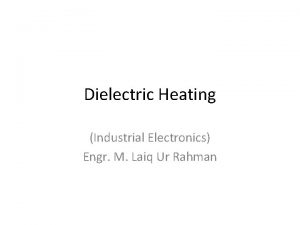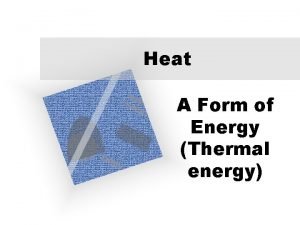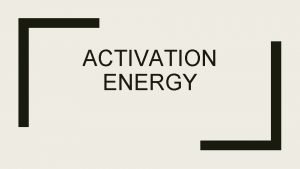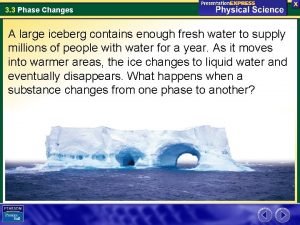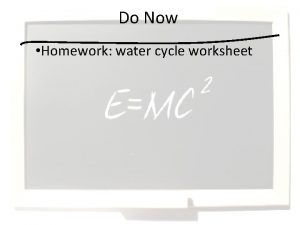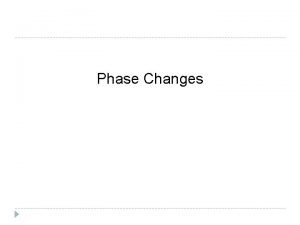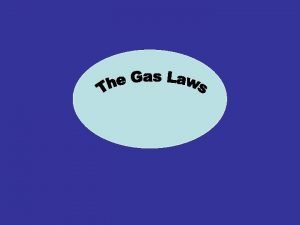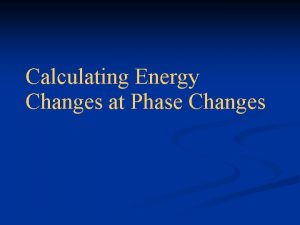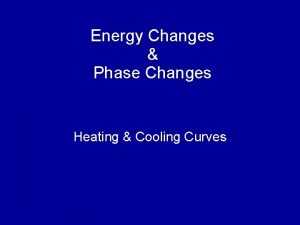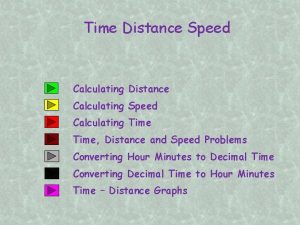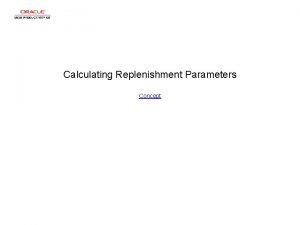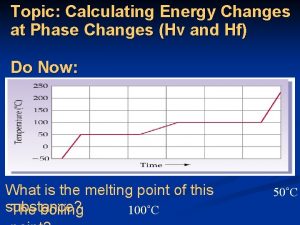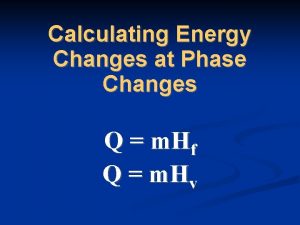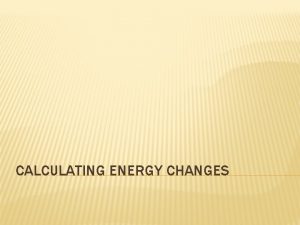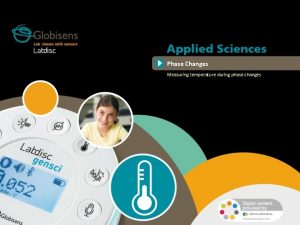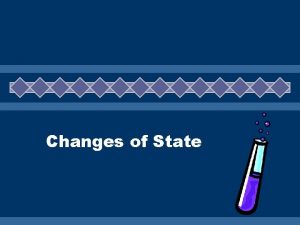Calculating Energy Changes at Phase Changes The heating

















- Slides: 17

Calculating Energy Changes at Phase Changes

The heating rate is 150 J/min. If the substance takes 4 minutes to melt, how much heat energy was used to melt it?

What is the melting point of this substance? The boiling point?

Heat of Fusion n Amount of energy required to change 1 gram of a pure substance from a solid to a liquid at its melting point. n Heat of Fusion = Hf n Hf = physical constant. for water = 333. 6 Joules per gram (Table B)

How much heat is absorbed when 10 grams of ice melts at 0 o. C? Heat absorbed = mass of substance X heat of fusion of substance n n Q = m. Hf = (10 g)(333. 6 J/g) = 3336 J n Where does that energy go? n Particles must overcome forces of attraction to move farther apart.


Heat of Vaporization n Amount of energy required to convert 1 gram of a pure substance from a liquid to a gas at its boiling point. n Heat of vaporization = constant n Hv Hv = physical for water = 2259 J/g

How much energy does it take to vaporize 10 g of water? n Q = m. Hv n Q = (10 g)(2259 J/g) = 22590 J n It takes a lot more energy to go from liquid to gas than from solid to liquid. Why?

The particles are spreading out a lot more!

Heats of fusion & vaporization n Determined in calorimetry experiments.

Temperature Q= m. Cs T Q= m. Hf Q= m. Cl T Time Q= m. Hv Q= m. Cg T

3 equations for Q n Q = m. C T n Q = m. Hf n Q = m. Hv n Have to figure out which one to use for a given problem. n Depends which section of heating curve. n Look for hints in the problem.

Q = m. C T n Temperature n Final temperature changed n Temperature increased n Temperature decreased n Initial temperature n Start temperature n Ending temperature n From ____ to ____ n Water

Q = m. Hf n Ice n Freezing n Melting n At 0 C (for H 2 O) n At constant temperature

Q = m. Hv n Steam n Boiling n Condensation n At 100 C (for H 2 O) n At constant temperature

Phase Diagrams n A graph of temperature versus pressure that indicates the conditions under which gaseous, liquids, and solid phases of a particular substance exit. n Triple Point – indicates the temperature and pressure conditions at which the solid, liquid, and vapor of the substance can coexist at equilibrium.

The critical temperature for carbon dioxide is 31. 1°C, and the critical pressure is 73 atm. Above the critical temeprature, the fluid is called super-critical fluid.
 Difference between induction heating and dielectric heating
Difference between induction heating and dielectric heating Thermal energy equation physics
Thermal energy equation physics Determine activation energy from graph
Determine activation energy from graph Normal phase vs reverse phase chromatography
Normal phase vs reverse phase chromatography M tswett pronunciation
M tswett pronunciation Mobile phase and stationary phase
Mobile phase and stationary phase Chromatography means
Chromatography means Normal phase vs reverse phase chromatography
Normal phase vs reverse phase chromatography Difference between phase voltage and line voltage
Difference between phase voltage and line voltage Which detector used in hplc
Which detector used in hplc In a ∆-connected source feeding a y-connected load
In a ∆-connected source feeding a y-connected load Csce 441
Csce 441 All states of matter
All states of matter Fusion chemistry phase change
Fusion chemistry phase change 6 phase changes
6 phase changes Phase change worksheet
Phase change worksheet Phase changes
Phase changes Diffusion vs effusion
Diffusion vs effusion
